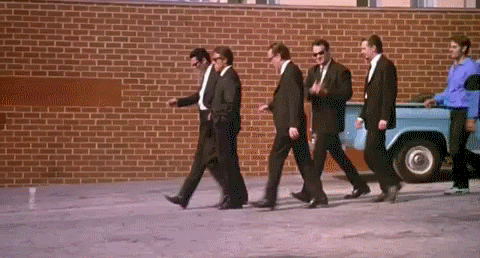From my phone seeing if the app works
Friday 28 September 2012
Thursday 27 September 2012
How is new technology changing the way that audiences consume film?
It used to be that you could only watch a film in a cinema, but with so many changes in technology you can now watch one almost anywhere. It all started in around 1955 with the introduction of TV’s, now people could watch films if they were on from home. And then in 1985 VHS tapes were introduced. Now you could rent or buy the film you wanted and watch it in the comfort of your own home. With these changes to how films are watched, the amount of people going to the cinema has dropped by an enormous amount, in 1945 there were 1585 million admissions, in 2010 this was only 169.2 million.
But recently there has been a slight rise in the amount of admissions due to 3D films becoming more common. Now people have a reason to go to the cinema for the “3D experience” instead of just watching from home. Over 1400 more 3D screens have been built since 2006, making 3D more readily available. The same goes with the amount of 3D films, in 2009 there were only 14, in 2011 this was 47.
Annual film viewing for 2011 in the UK shows that most films are watched on TV, 77%. DVD/Blu-ray 14.2%, download/streamed 5.5% and cinema with only 3.4%. This is most likely because it is so much easier to just stay in and watch a film on film 4 or channel 5. DVD’s and blu-rays are an easy present for somebody this percentage is quite high, with DVD’s also you don’t have to hope that there is a good film on as you can choose what to watch. Downloading and streaming are becoming more popular due to cheap services like netflix and love film. And as for cinema, their poor results are due to tickets becoming more expensive and people going for the easier option of just renting a film.
 An amazing 21.7 % of 55+ record films from TV, this shows that it is becoming much simpler to do things like this and that could be a reason for cinemas becoming less popular as now almost anyone can record a film or use VoD. However 15.4% of 16-24 year olds still go to the cinema, this is lower for all other ages and this may be because it is a good way to be social and meet up with friends. The common trend with this graph is that as you get older you go to the cinema less, record more films and watch more films on live TV. This could be down to many reasons; one is that it is easier and cheaper to just watch a film at home than go to the cinema, we also have new better TV’s that can be 3D and 50 inches big, TVs are getting ever closer to the cinema experience that soon cinemas will be obsolete.
An amazing 21.7 % of 55+ record films from TV, this shows that it is becoming much simpler to do things like this and that could be a reason for cinemas becoming less popular as now almost anyone can record a film or use VoD. However 15.4% of 16-24 year olds still go to the cinema, this is lower for all other ages and this may be because it is a good way to be social and meet up with friends. The common trend with this graph is that as you get older you go to the cinema less, record more films and watch more films on live TV. This could be down to many reasons; one is that it is easier and cheaper to just watch a film at home than go to the cinema, we also have new better TV’s that can be 3D and 50 inches big, TVs are getting ever closer to the cinema experience that soon cinemas will be obsolete.
Downloading films (legal or illegal) is quickly becoming more popular as new faster services like netflix and love film get cheaper, laptops and computers get bigger, and internet speeds increase. 10.5% of 15-24 year olds download/stream films several times a week, this is only 1.7% for people over 55, this could show that older people still cant use these services as they may be too complicated, but it could also be that they just don’t watch that many films in comparison to someone younger.
 Phones like the iphone and the Samsung galaxy s are becoming competitors for cinemas as well, as phone screens get bigger it seems less ridiculous to watch a film on your phone. It’s still over 50% of everyone who don’t watch films on their phones at all but 14.2% of 25-34 year olds watch less than once every 6 months and 4.1% several times a week. I’ve watched films on my ipod before and it isn’t that bad really, good quality and it is very portable, you can watch the film anywhere you want. Surprisingly 0.4% of 55+ watch films on their phones several times a week; even though this is a tiny amount it shows that it is simple to do and quite practical.
Phones like the iphone and the Samsung galaxy s are becoming competitors for cinemas as well, as phone screens get bigger it seems less ridiculous to watch a film on your phone. It’s still over 50% of everyone who don’t watch films on their phones at all but 14.2% of 25-34 year olds watch less than once every 6 months and 4.1% several times a week. I’ve watched films on my ipod before and it isn’t that bad really, good quality and it is very portable, you can watch the film anywhere you want. Surprisingly 0.4% of 55+ watch films on their phones several times a week; even though this is a tiny amount it shows that it is simple to do and quite practical.
To conclude, as technology advances less and less people will keep going to the cinema. With tickets getting more expensive and films going onto DVD quicker it seems less urgent to go to the cinema when you can watch any film you like for a small fee or none online from the comfort of your own bed. Screens will get bigger, TVs cheaper, sound systems more advanced and DVD players are now available for next to nothing. Shops like CEX that sell second hand DVDs for a quid each are obviously going to get more popular as it’s so cheap and easy. But people will still go to the cinema as we still can’t get the cinema experience at home, nor can we watch a new release on the day from home, and some people just like to go there with friends because it’s good fun.
Tuesday 25 September 2012
How to shoot people walking
Shooting people walking is an essential skill for any director as it will come up in any film. It is important to not let the viewer get bored when watching something as simple as a shot of someone walking. Here are just a few of the ways:
 A tracking or crab shot is an excellent way of showing the character(s) walking from a sideways perspective, while also developing the background and involving the viewer into what is going on. It is used here in Reservoir Dogs to help introduce the characters.
A tracking or crab shot is an excellent way of showing the character(s) walking from a sideways perspective, while also developing the background and involving the viewer into what is going on. It is used here in Reservoir Dogs to help introduce the characters.
 A tracking or crab shot is an excellent way of showing the character(s) walking from a sideways perspective, while also developing the background and involving the viewer into what is going on. It is used here in Reservoir Dogs to help introduce the characters.
A tracking or crab shot is an excellent way of showing the character(s) walking from a sideways perspective, while also developing the background and involving the viewer into what is going on. It is used here in Reservoir Dogs to help introduce the characters.
While some directors don't follow this it is a common practice to not cross the line. Also known as the 180 degree rule it basically says that there is an invisible line through the character(s) that cameras should stay on one side of. This stops the scene flipping and characters ending up on different sides of the screen. Eg. With a walking scene they should always be walking to the left or the right of the screen, not both.
Close ups are important for walking scenes especially to introduce a character at the beginning of a film. By having such an extreme close up there is no mistaking who our attention should be on. An effective use of close up is to focus on the persons feet while they are walking, for example, the intro to Saturday Night Fever. It keeps the audience interested in something quite mundane like walking.
The key thing to remember for shooting people walking is variety. Without it viewers lose interest as walking isn't exactly the most exciting thing to watch in the world, but with the right music and a range of different shots anything can be interesting.
The key thing to remember for shooting people walking is variety. Without it viewers lose interest as walking isn't exactly the most exciting thing to watch in the world, but with the right music and a range of different shots anything can be interesting.
Friday 21 September 2012
Different Camera Angles
Different Camera Angles
This Powerpoint is to show different types of camera angles, the uses for them and what sort of scenes they could be used in to make that scene more dramatic. A useful guide with picture demonstrations.
This Powerpoint is to show different types of camera angles, the uses for them and what sort of scenes they could be used in to make that scene more dramatic. A useful guide with picture demonstrations.
Monday 17 September 2012
Thursday 13 September 2012
Subscribe to:
Posts (Atom)



